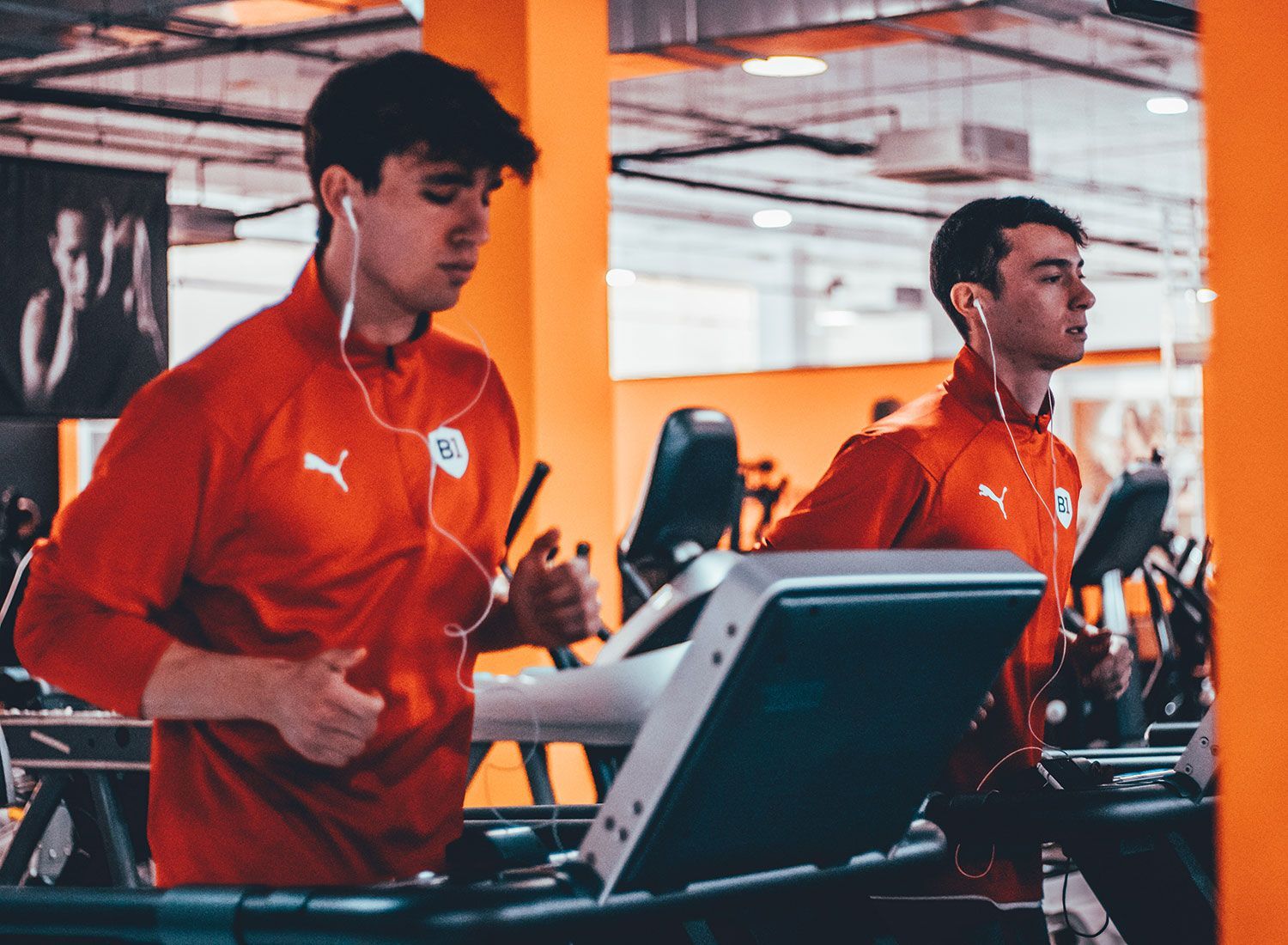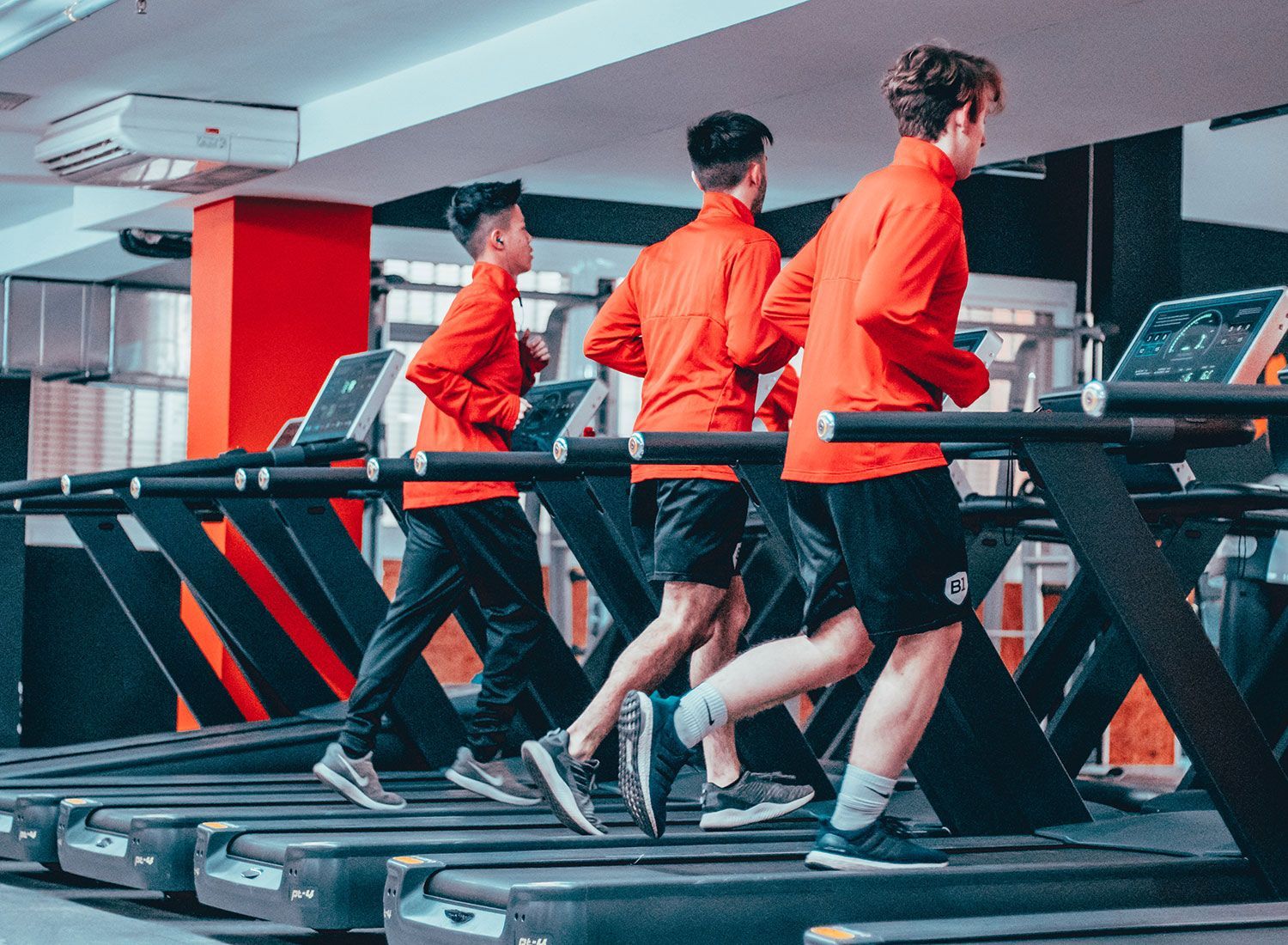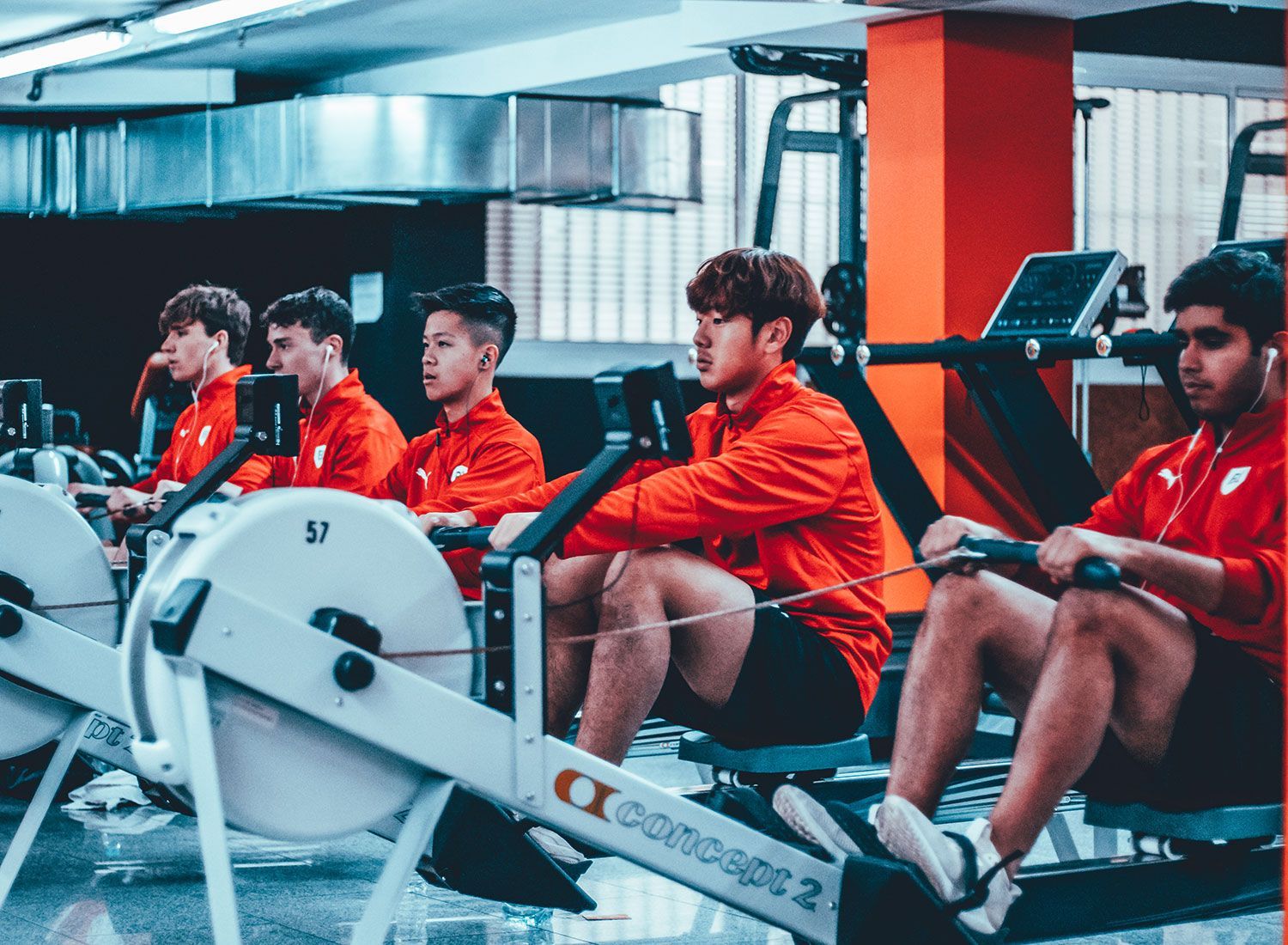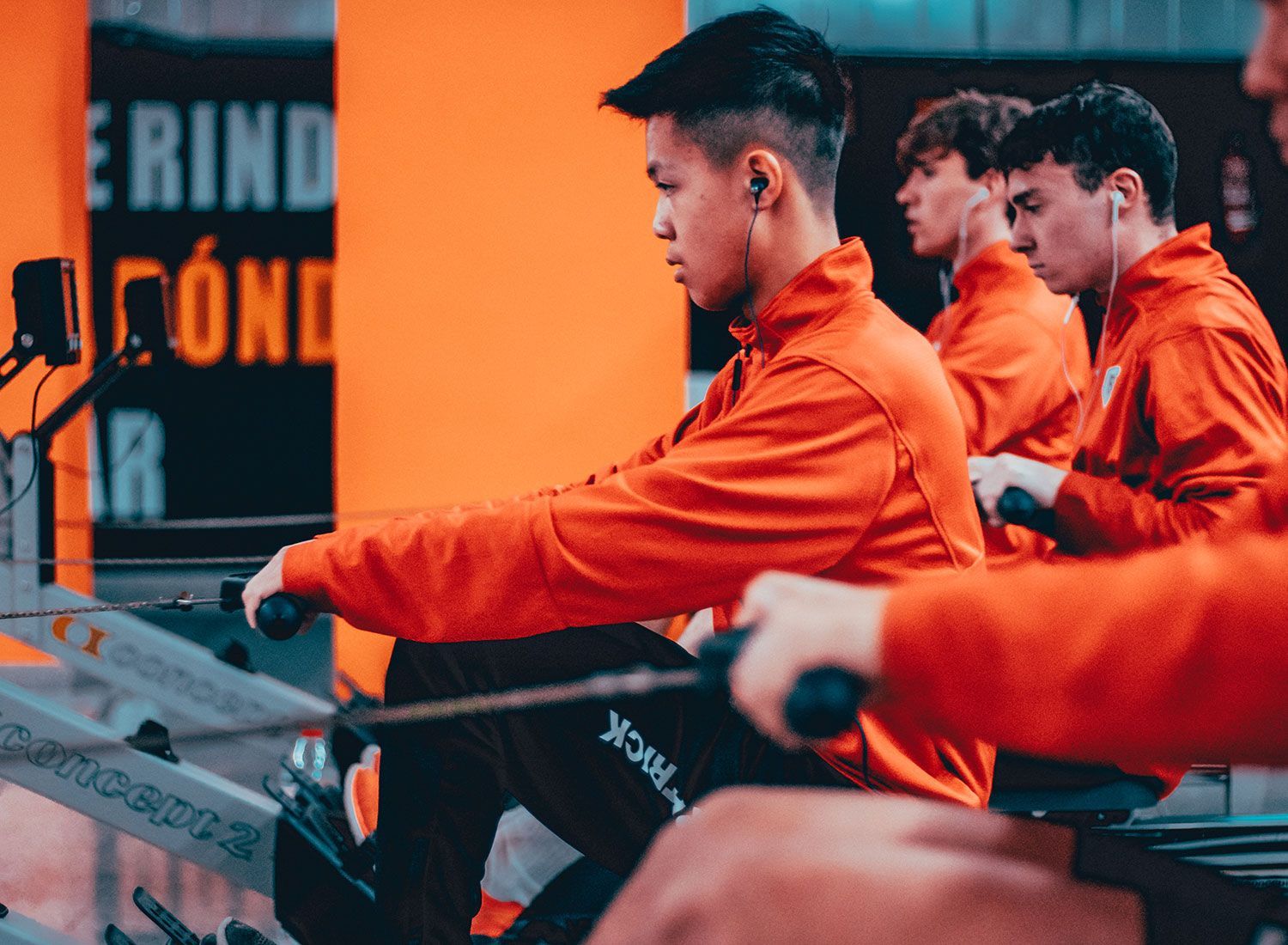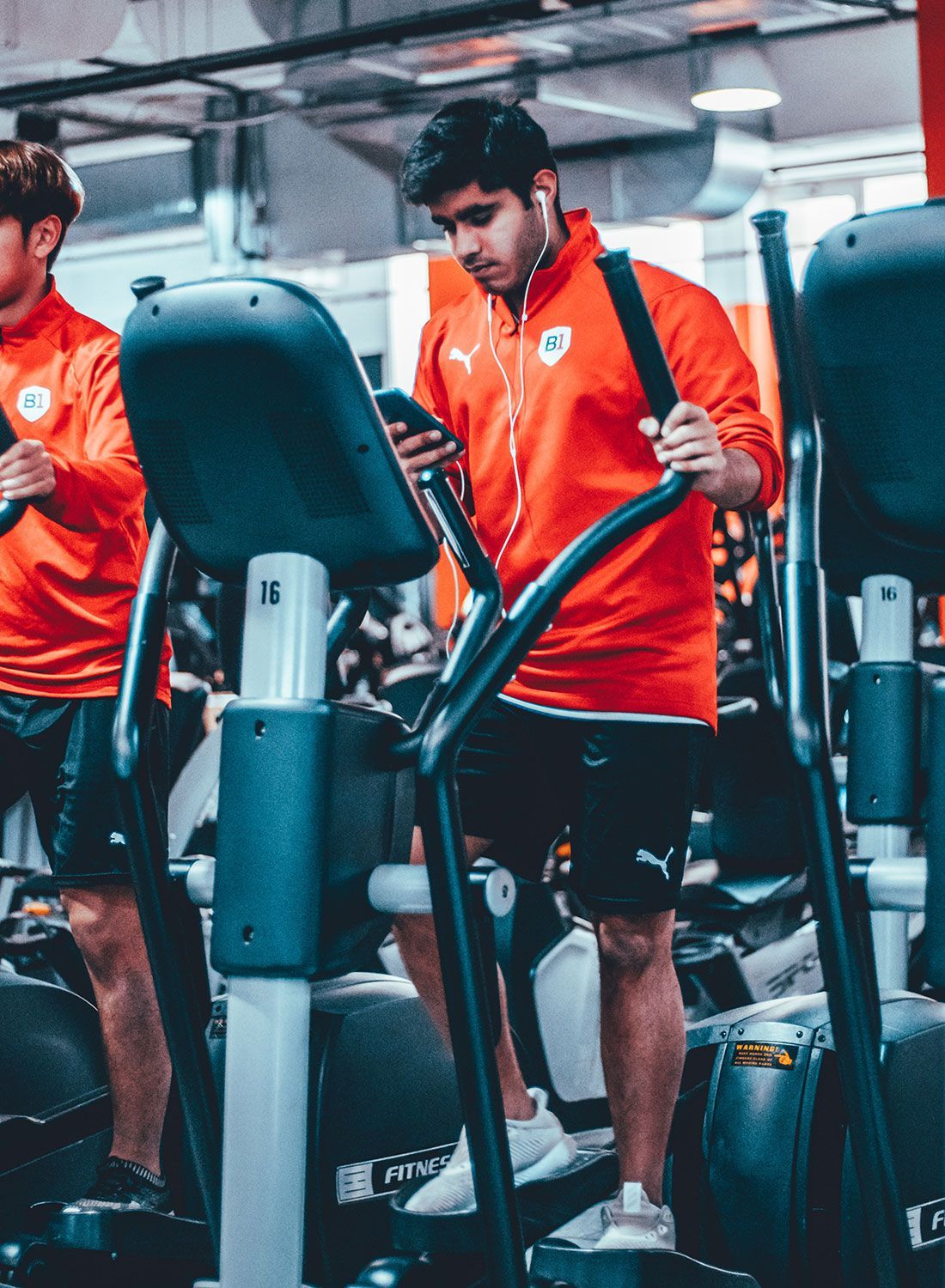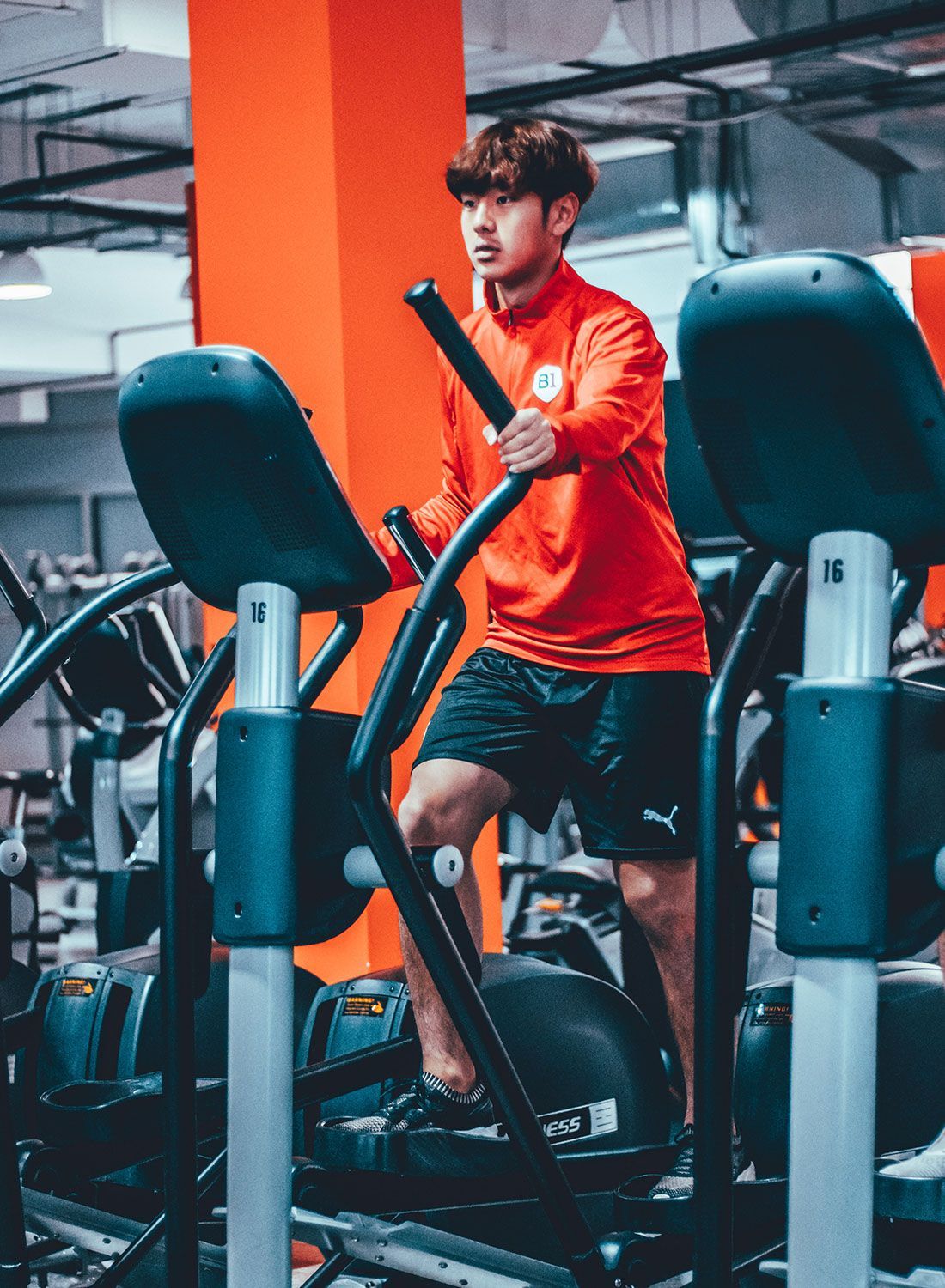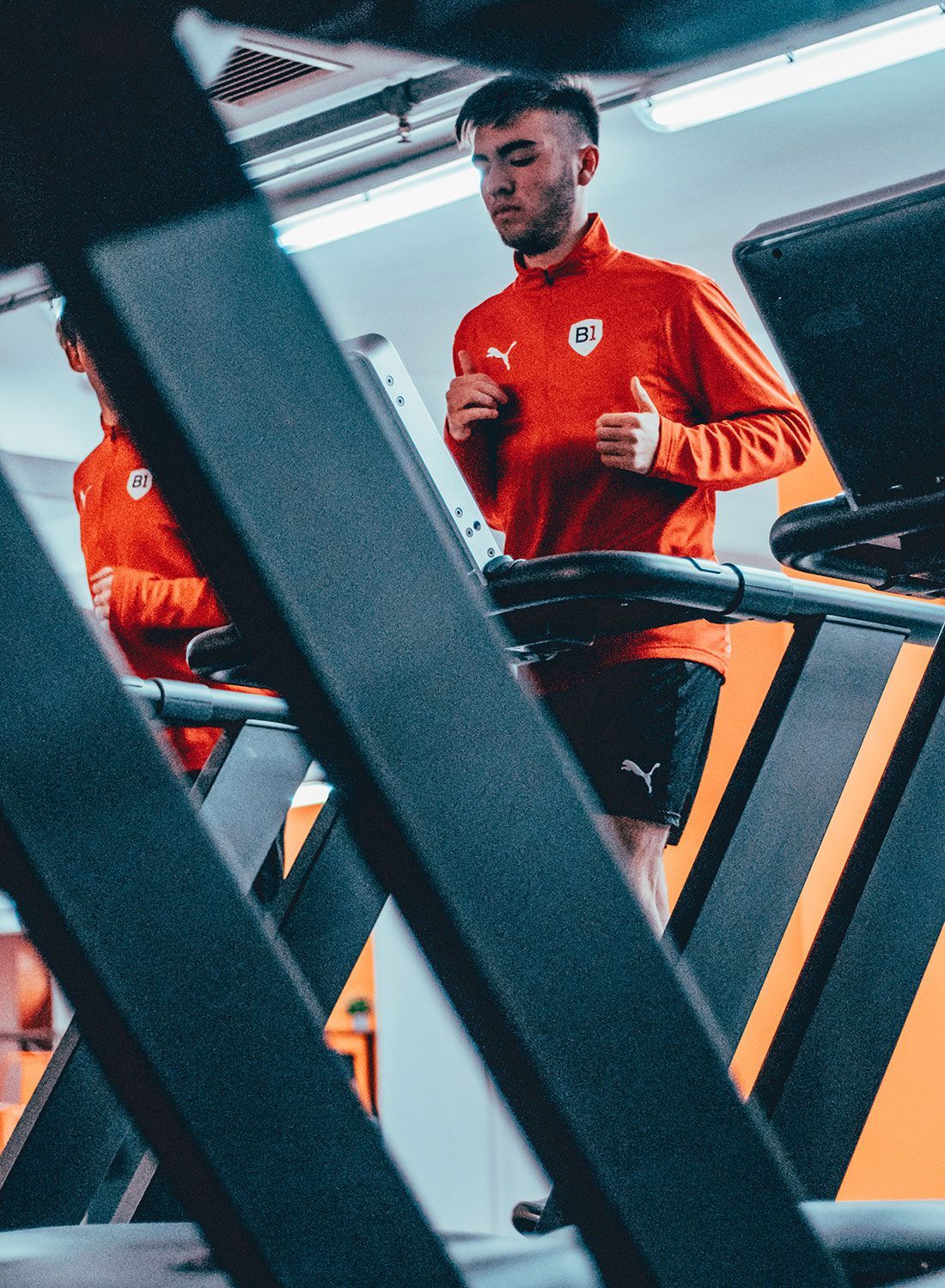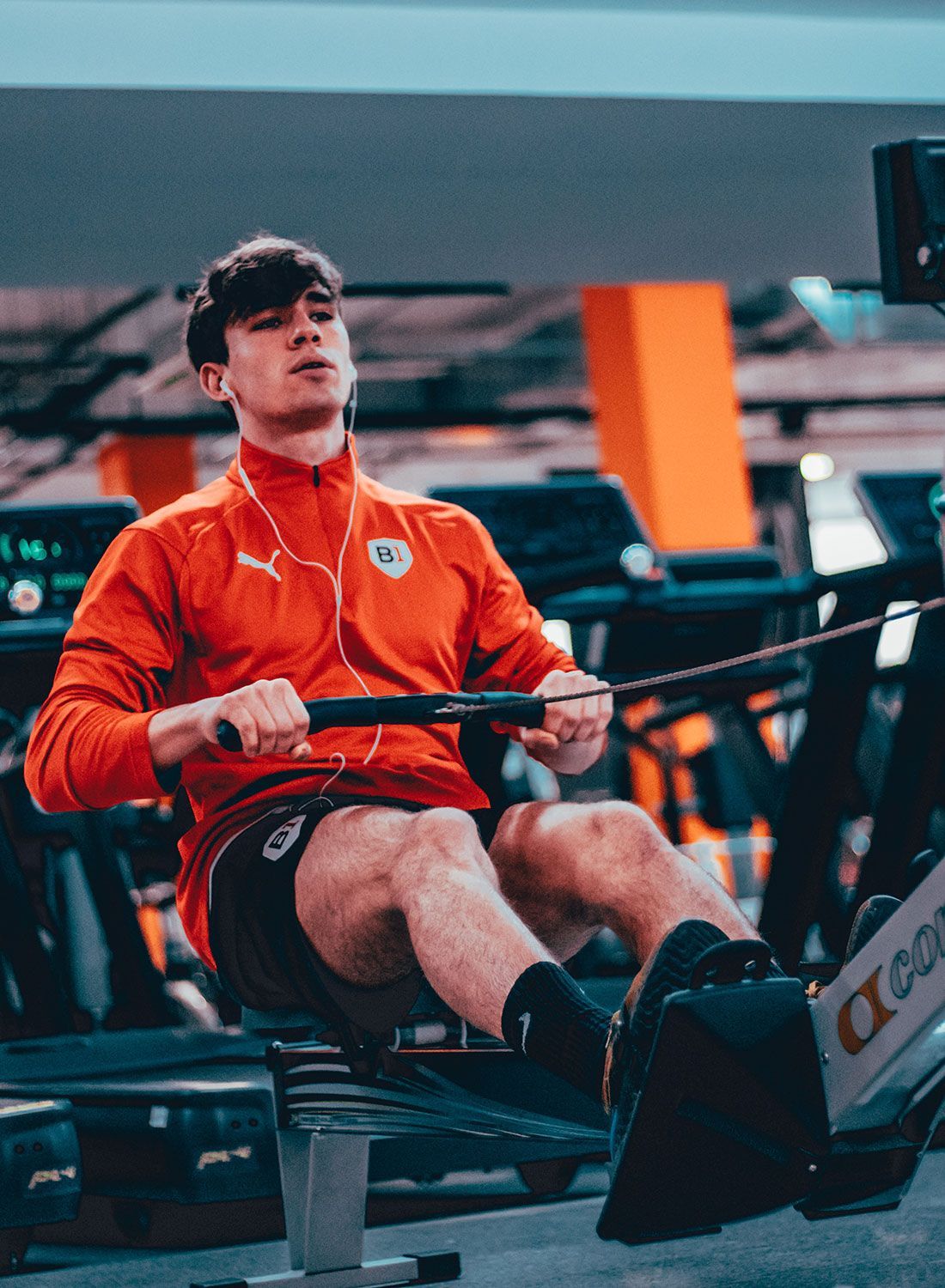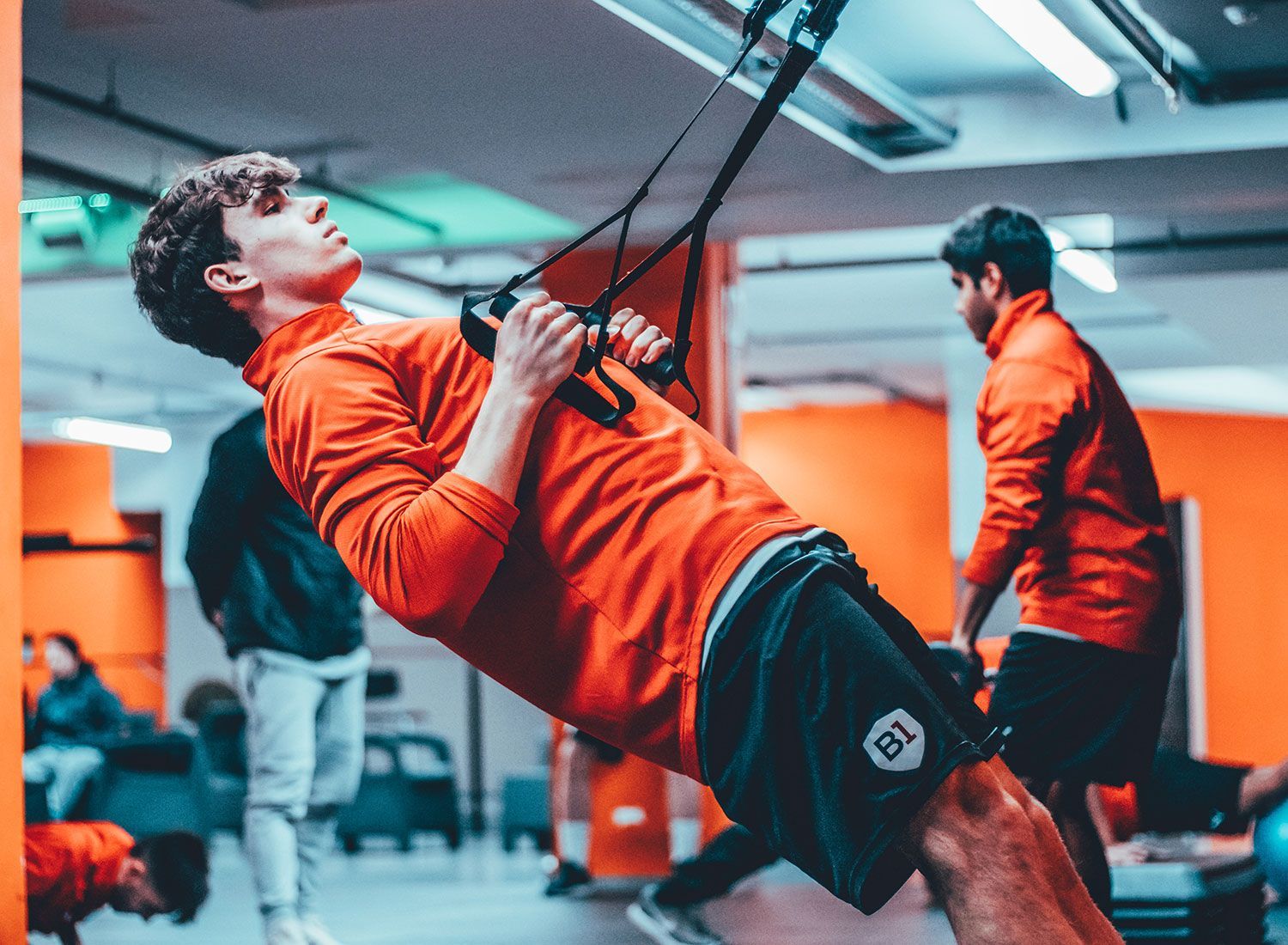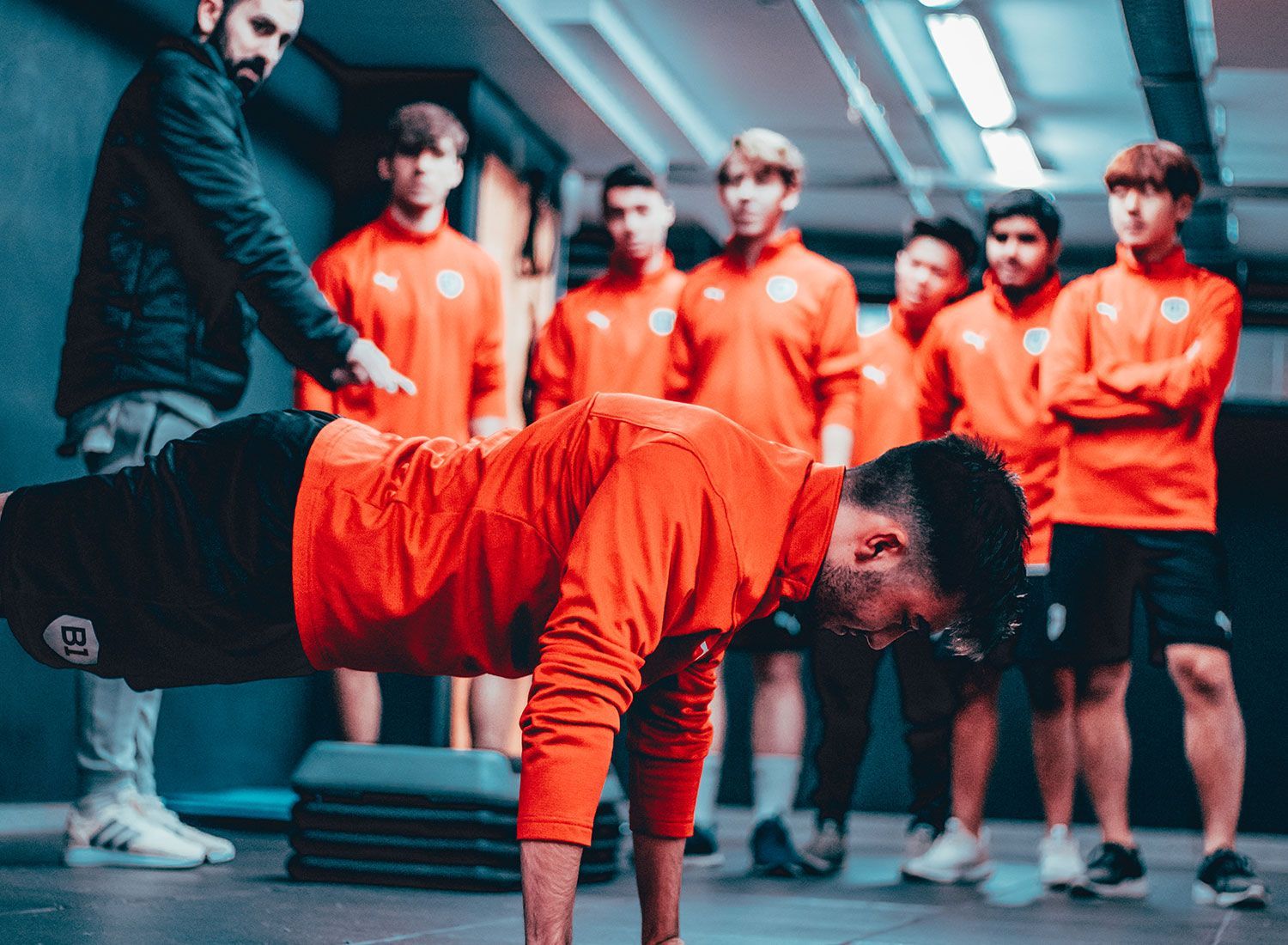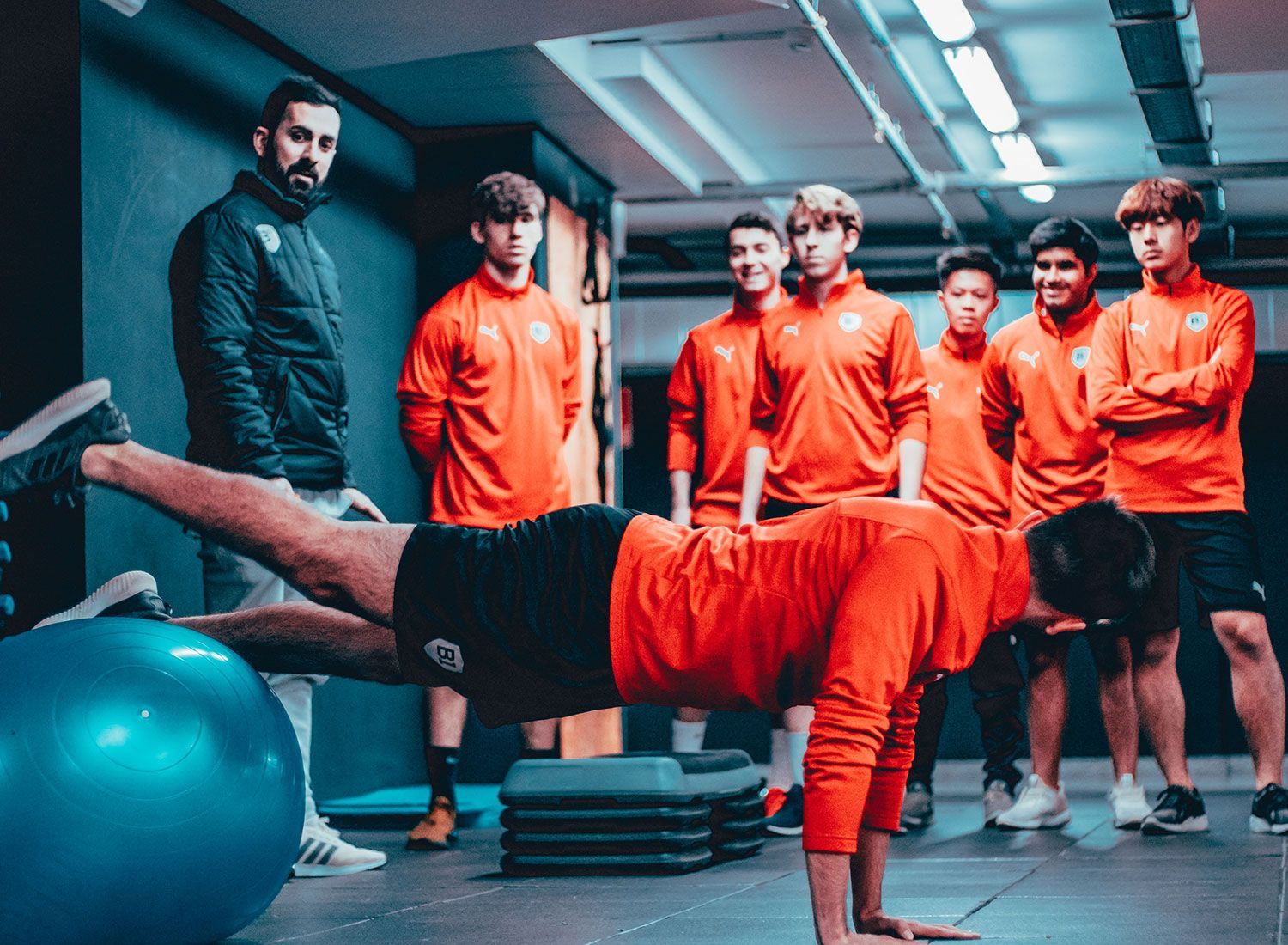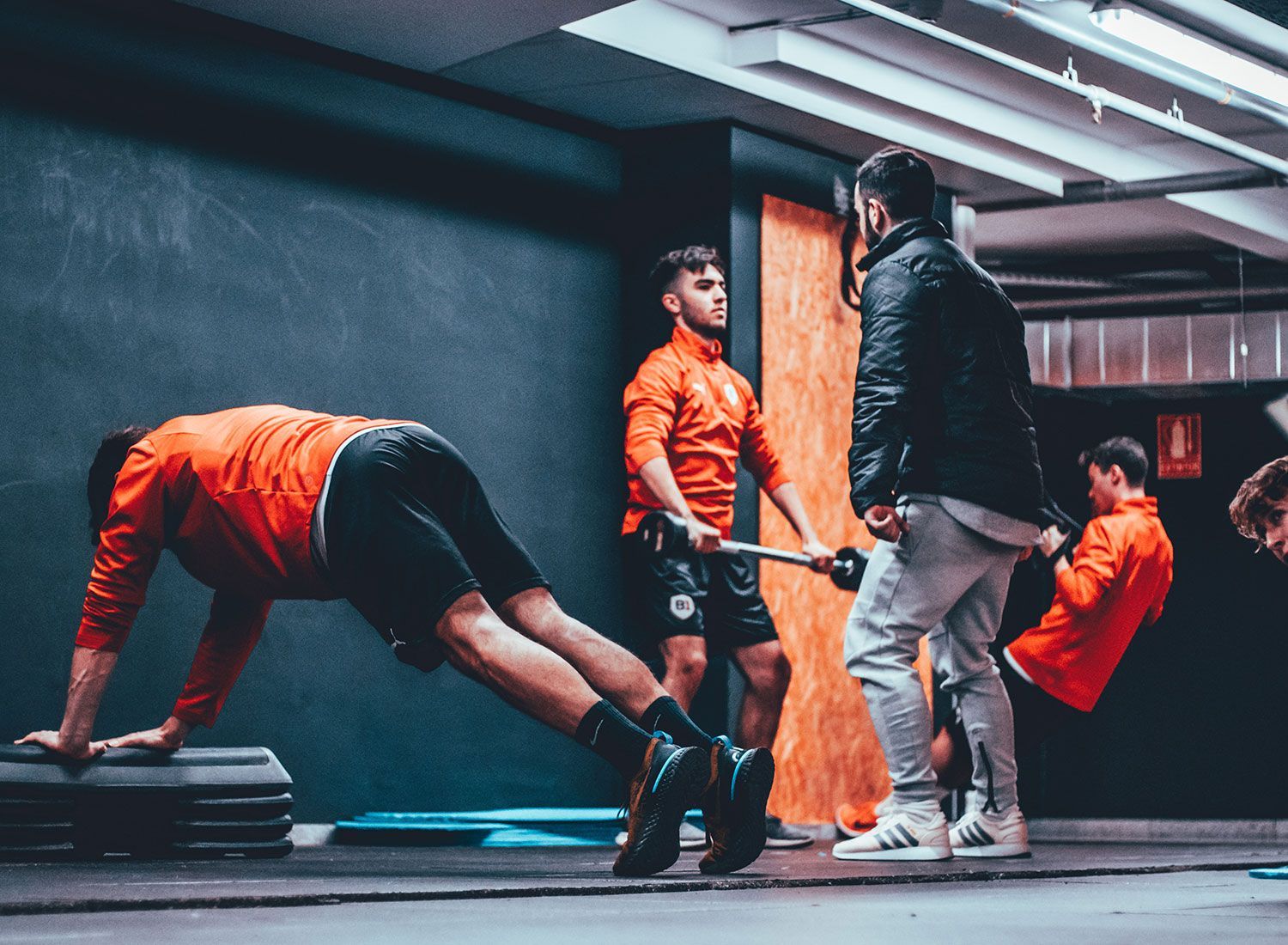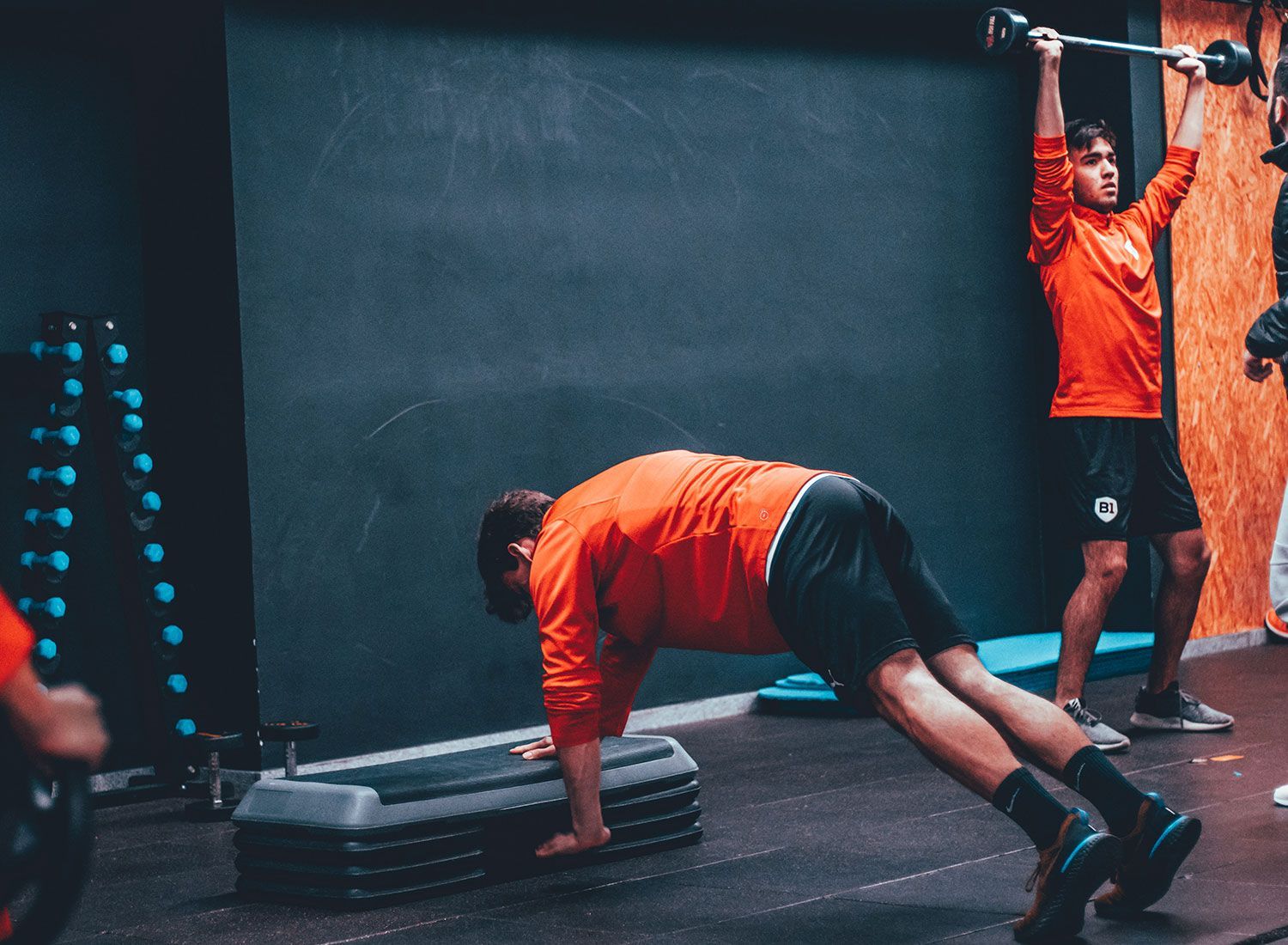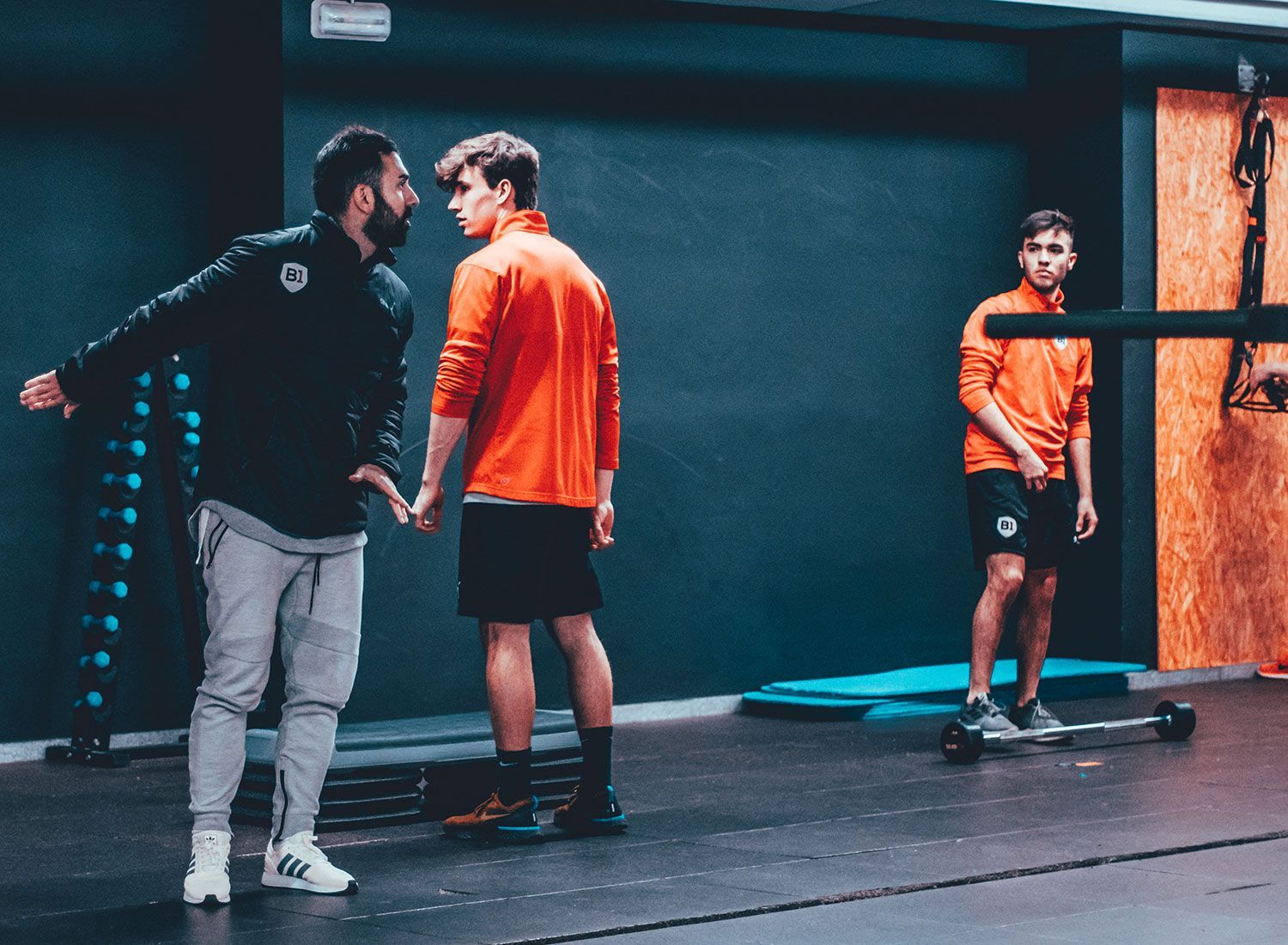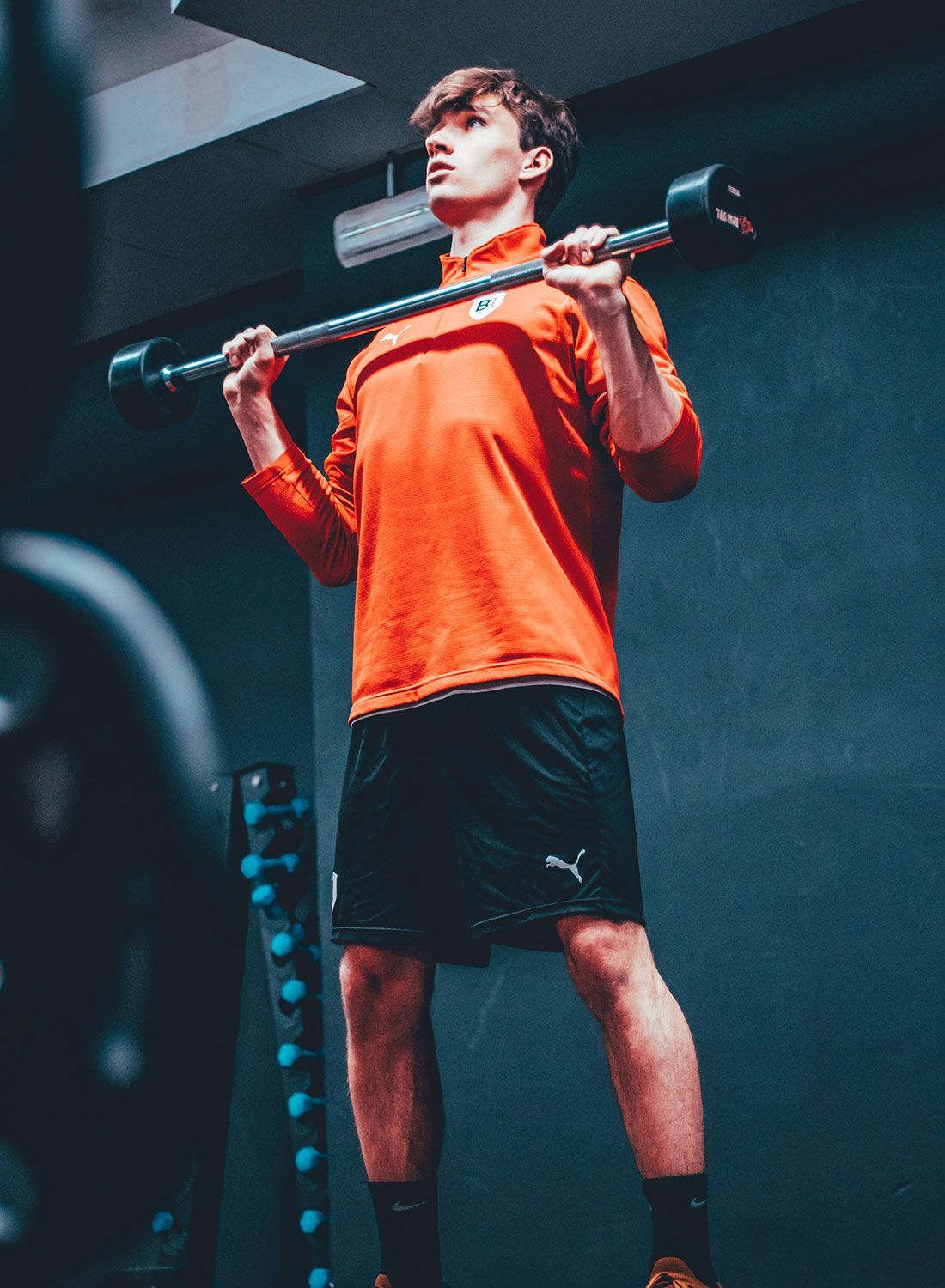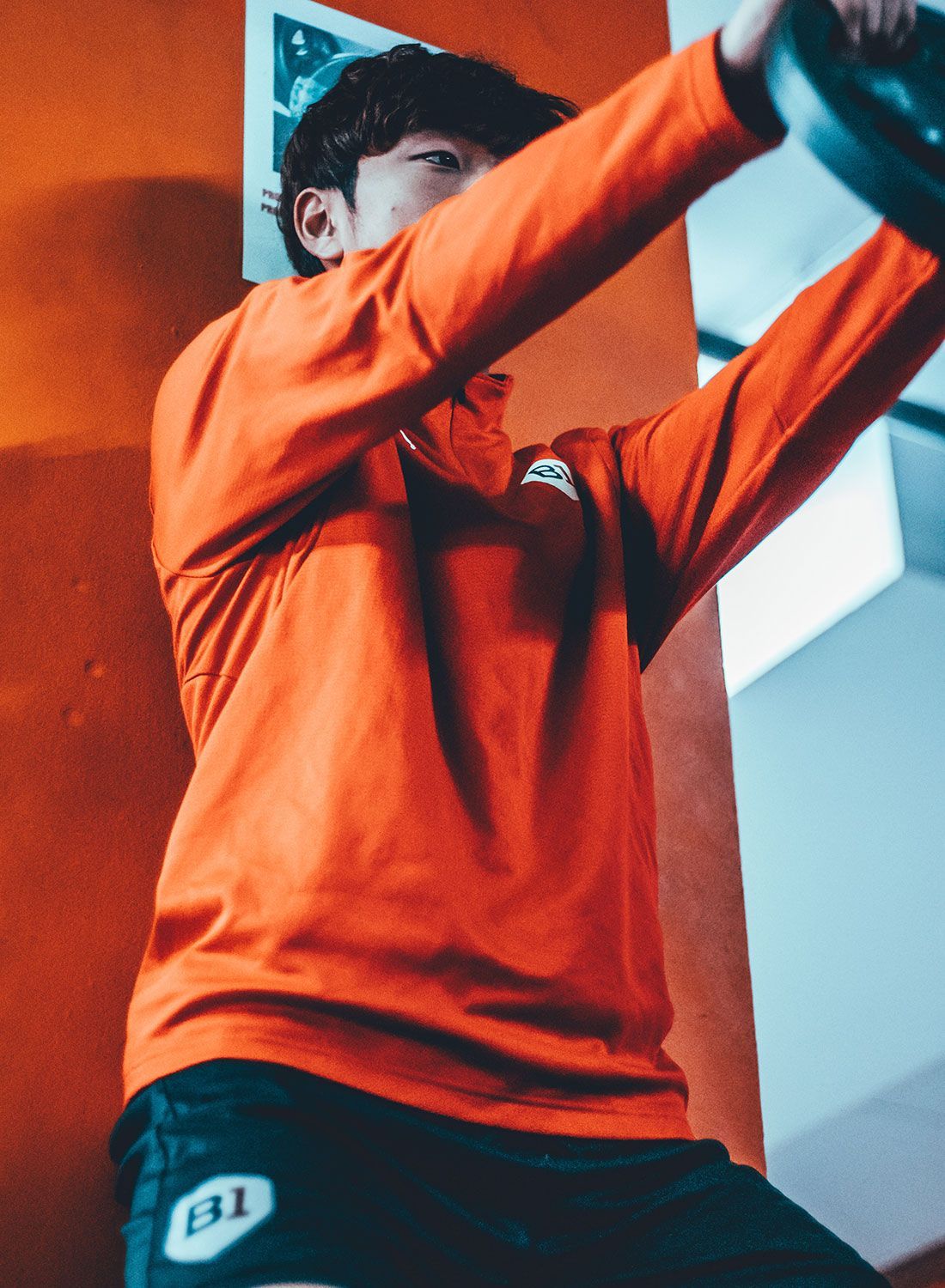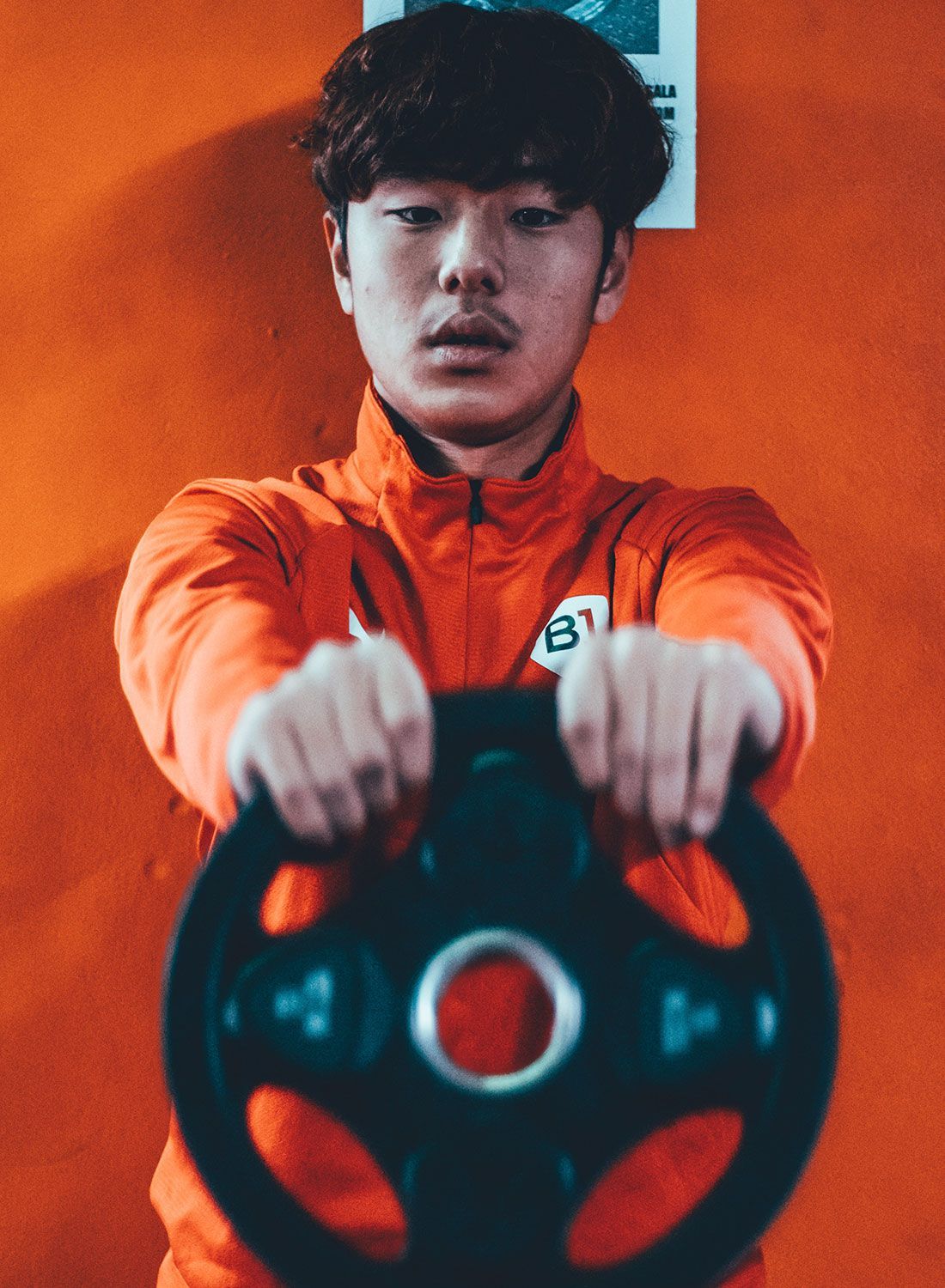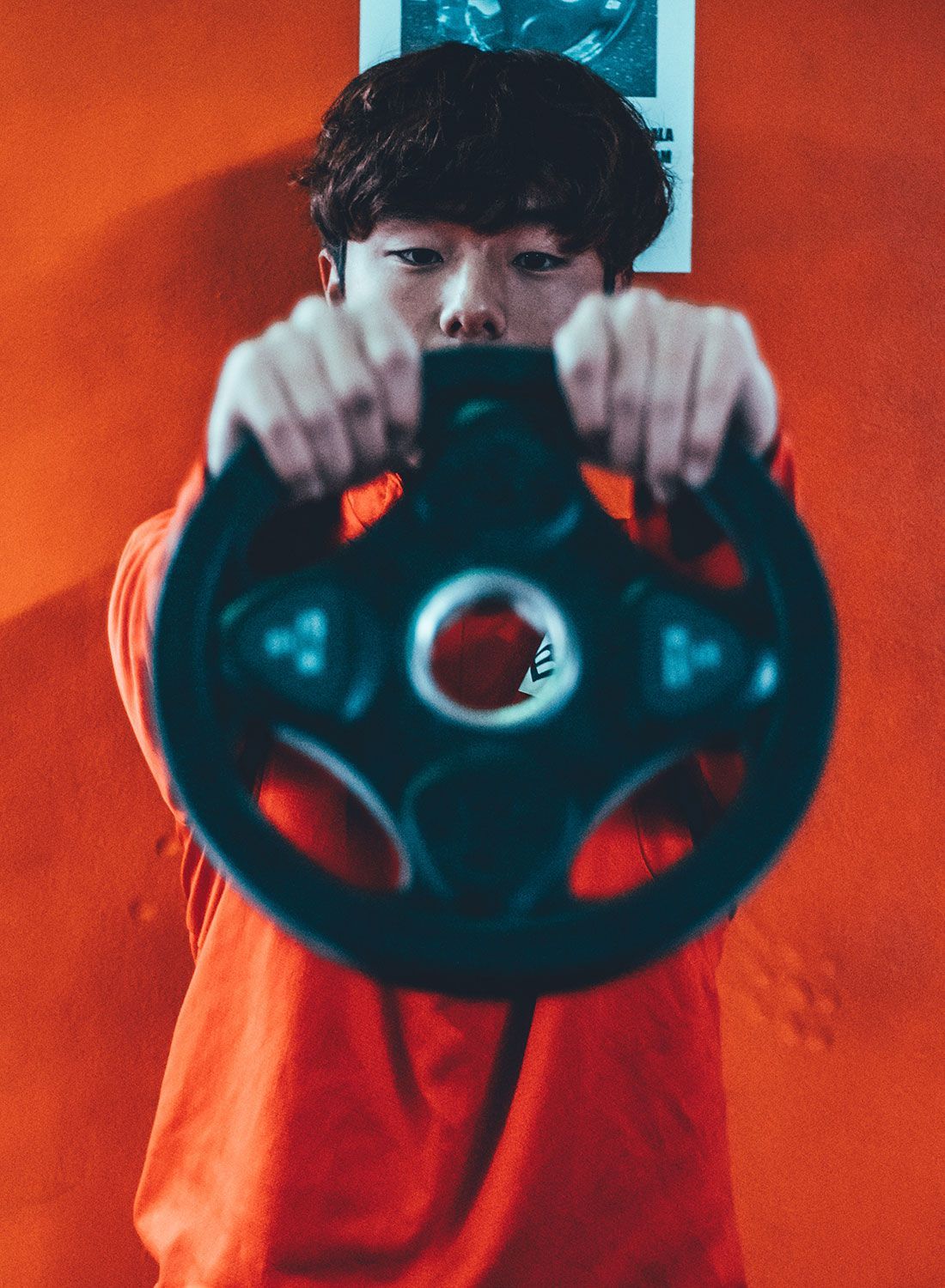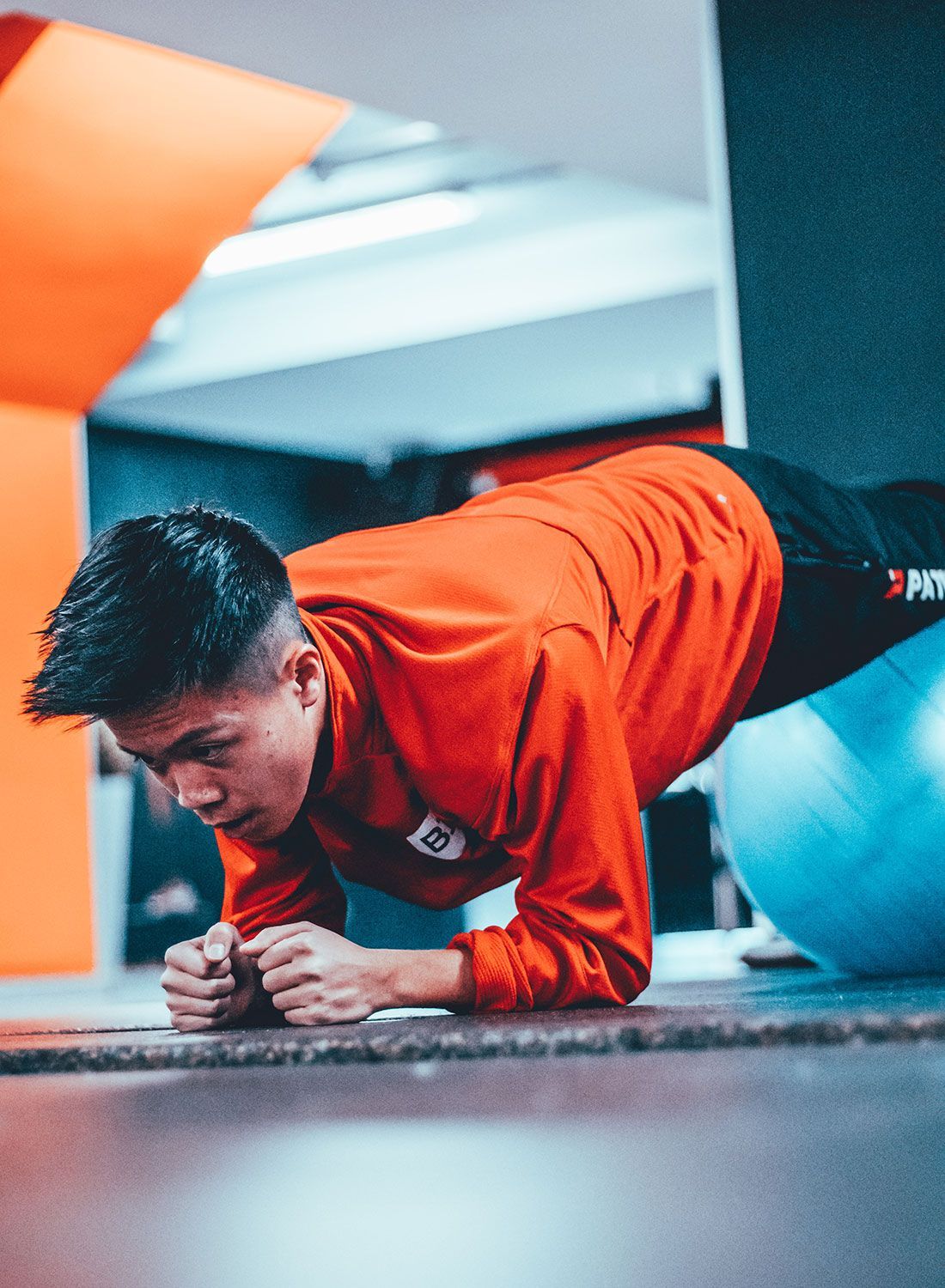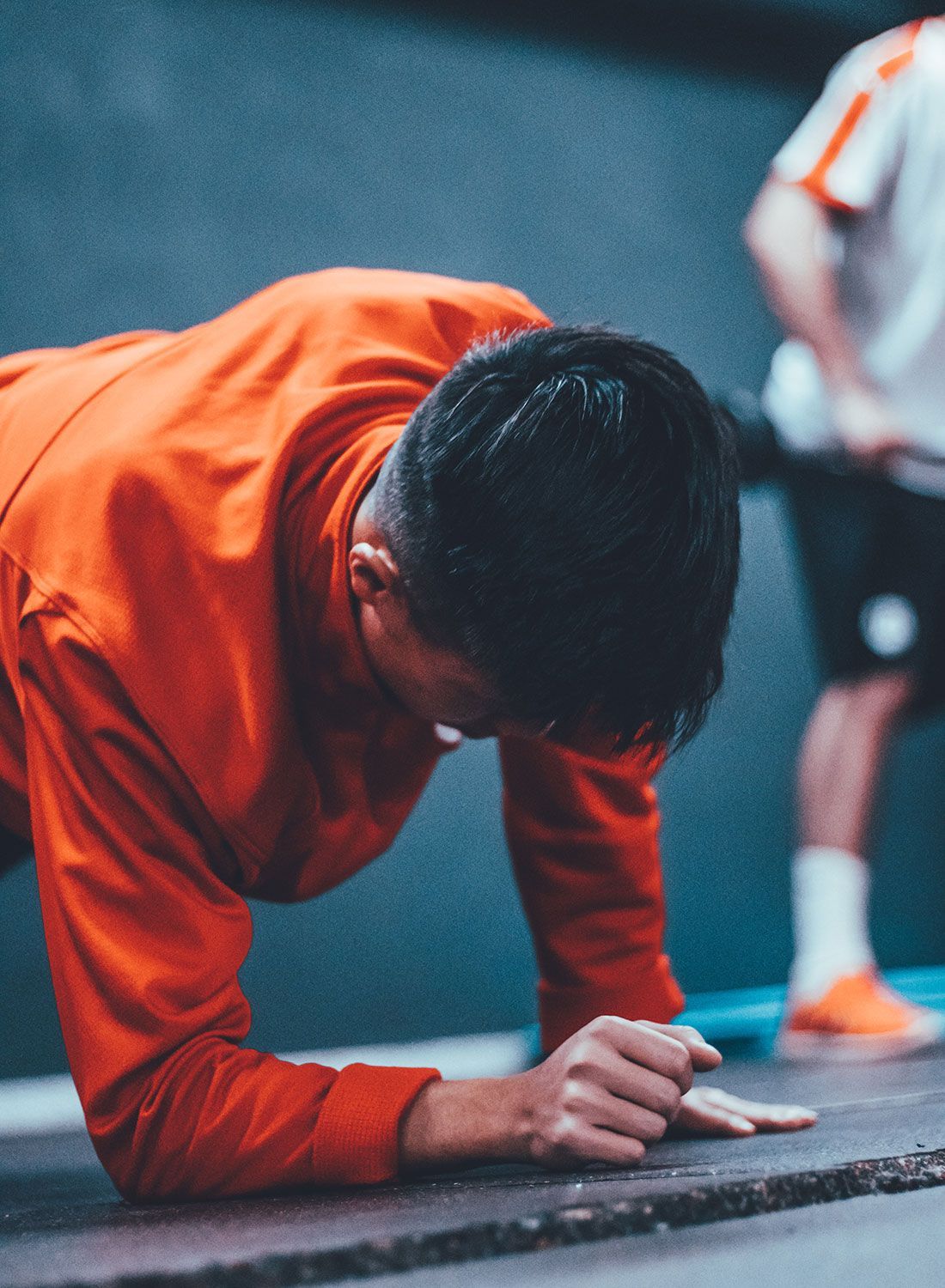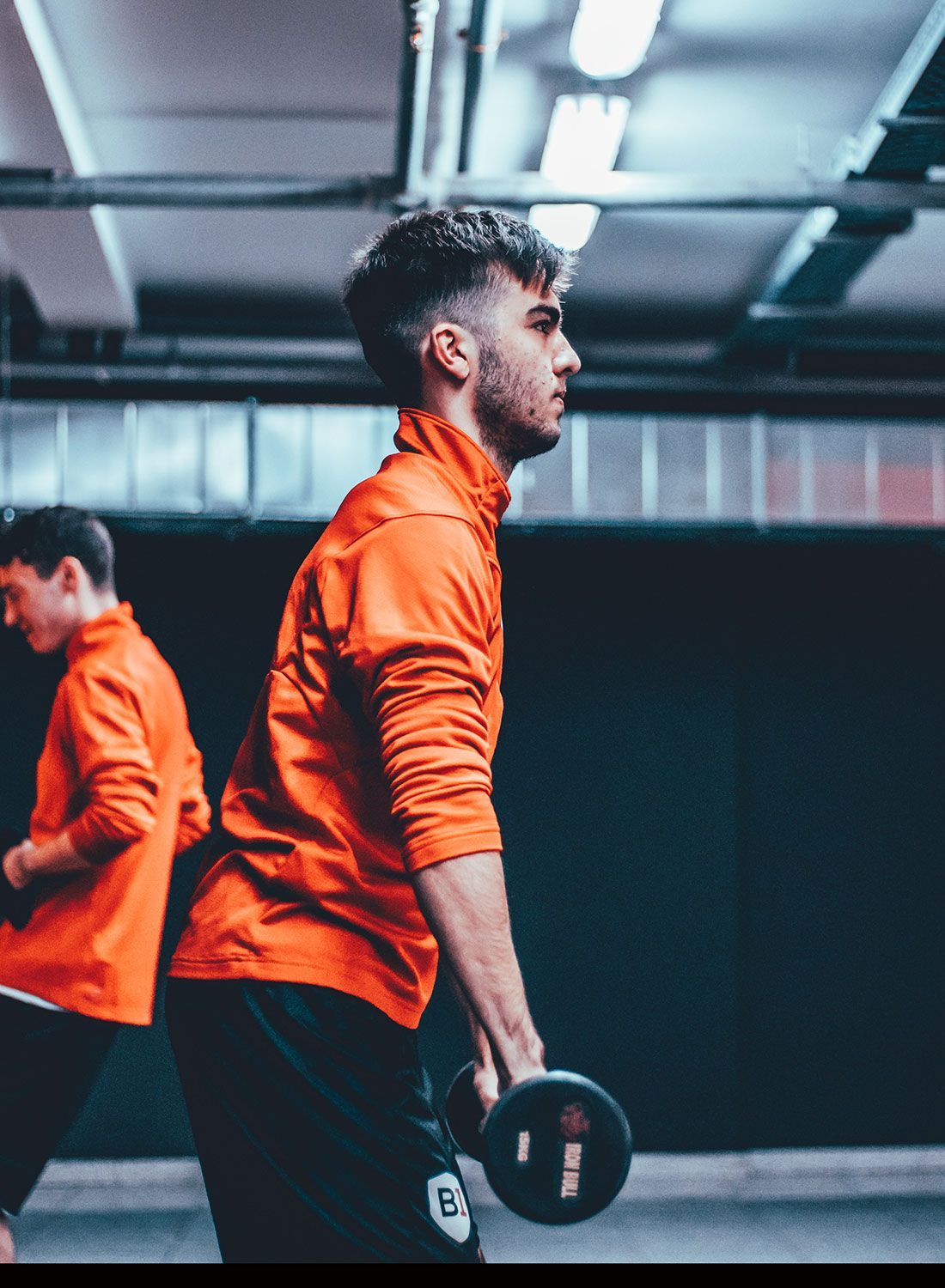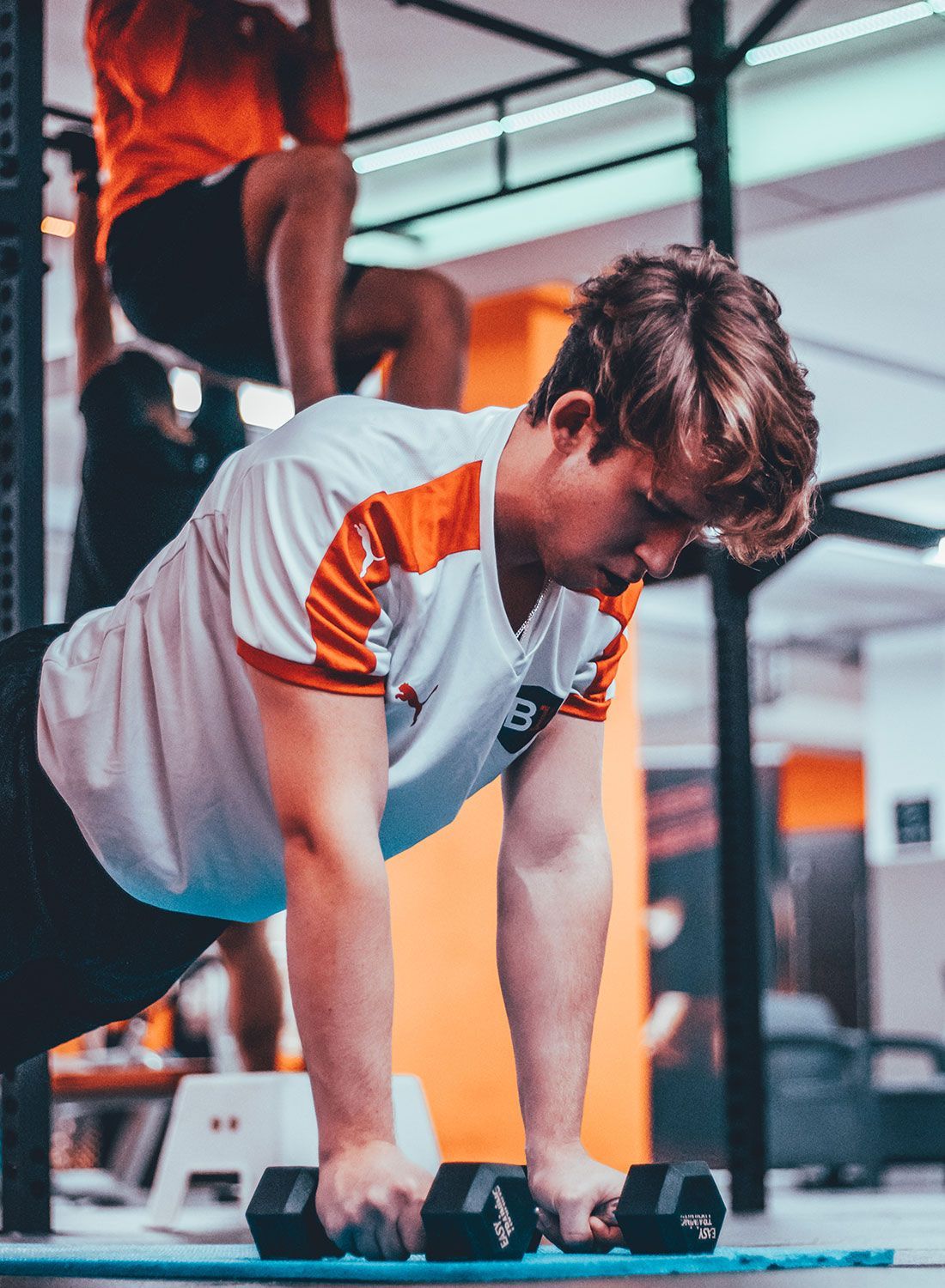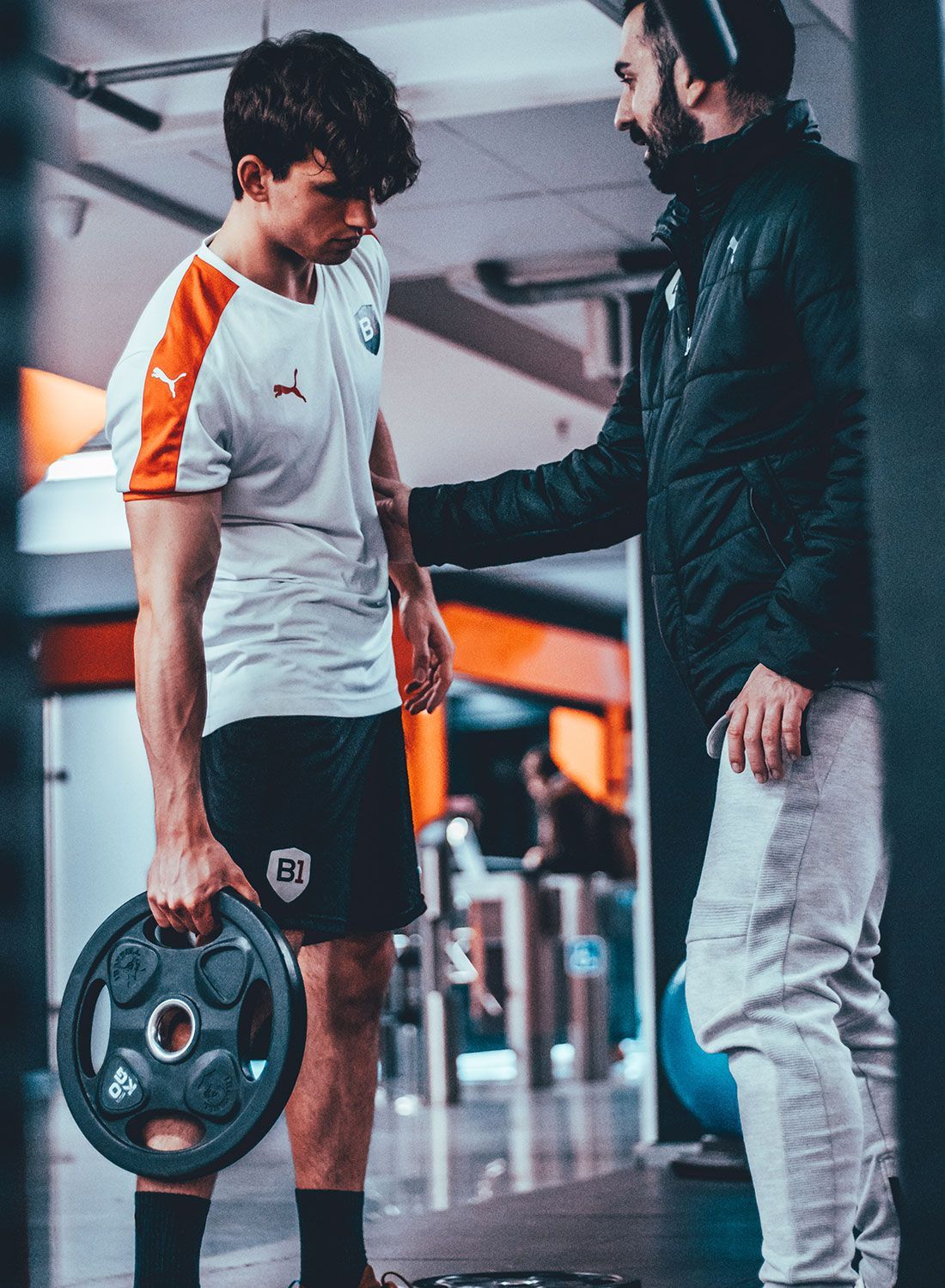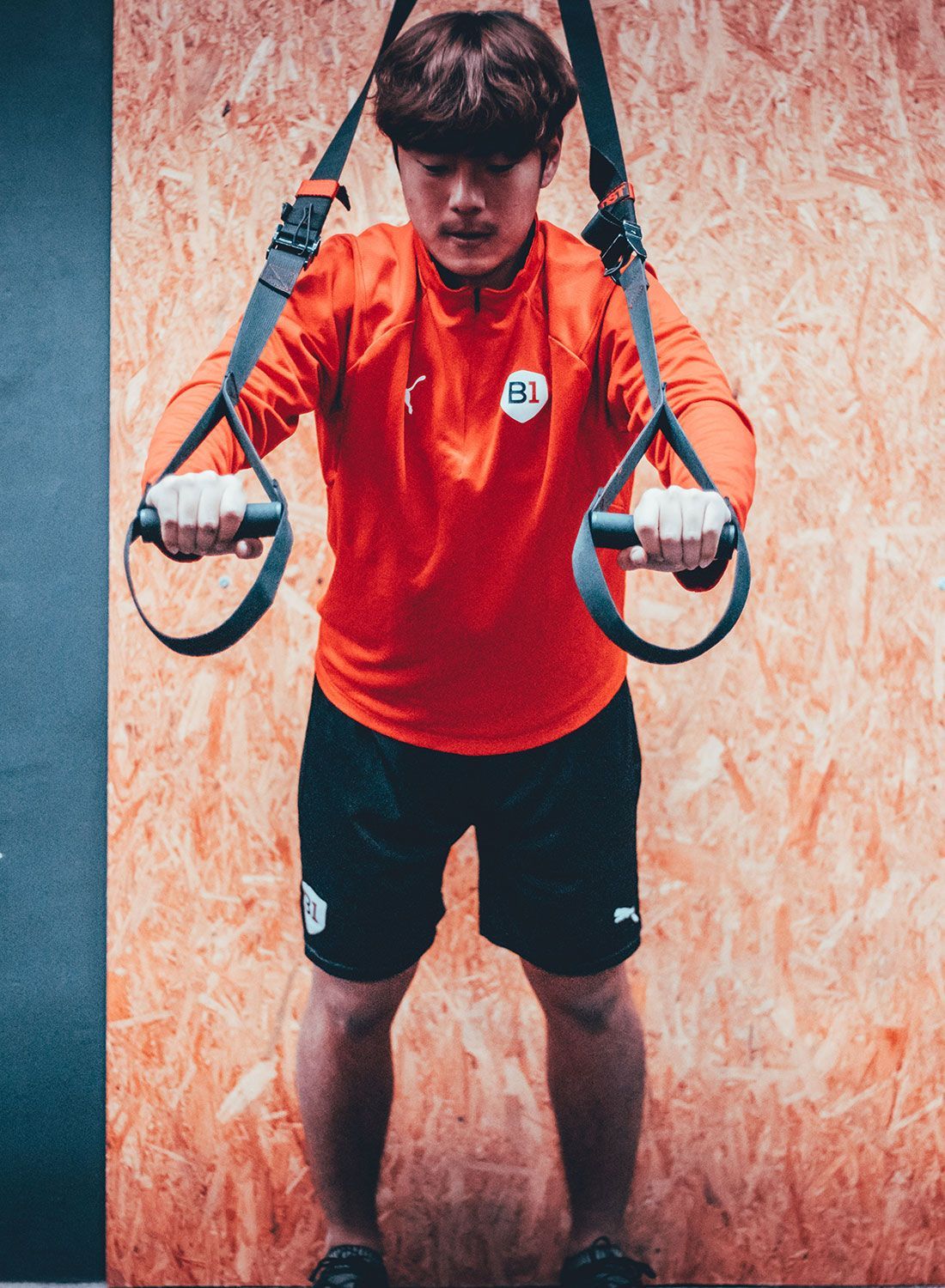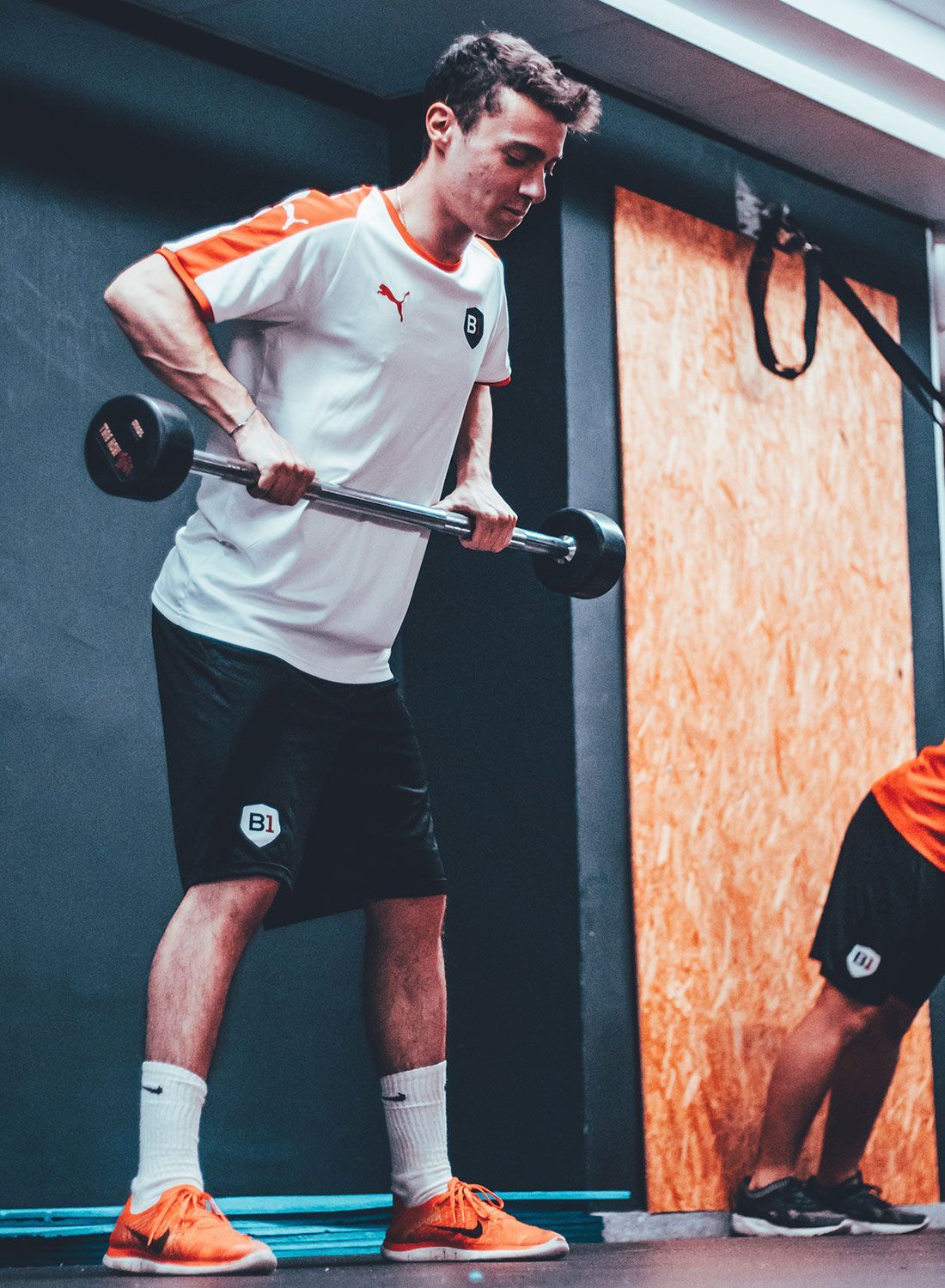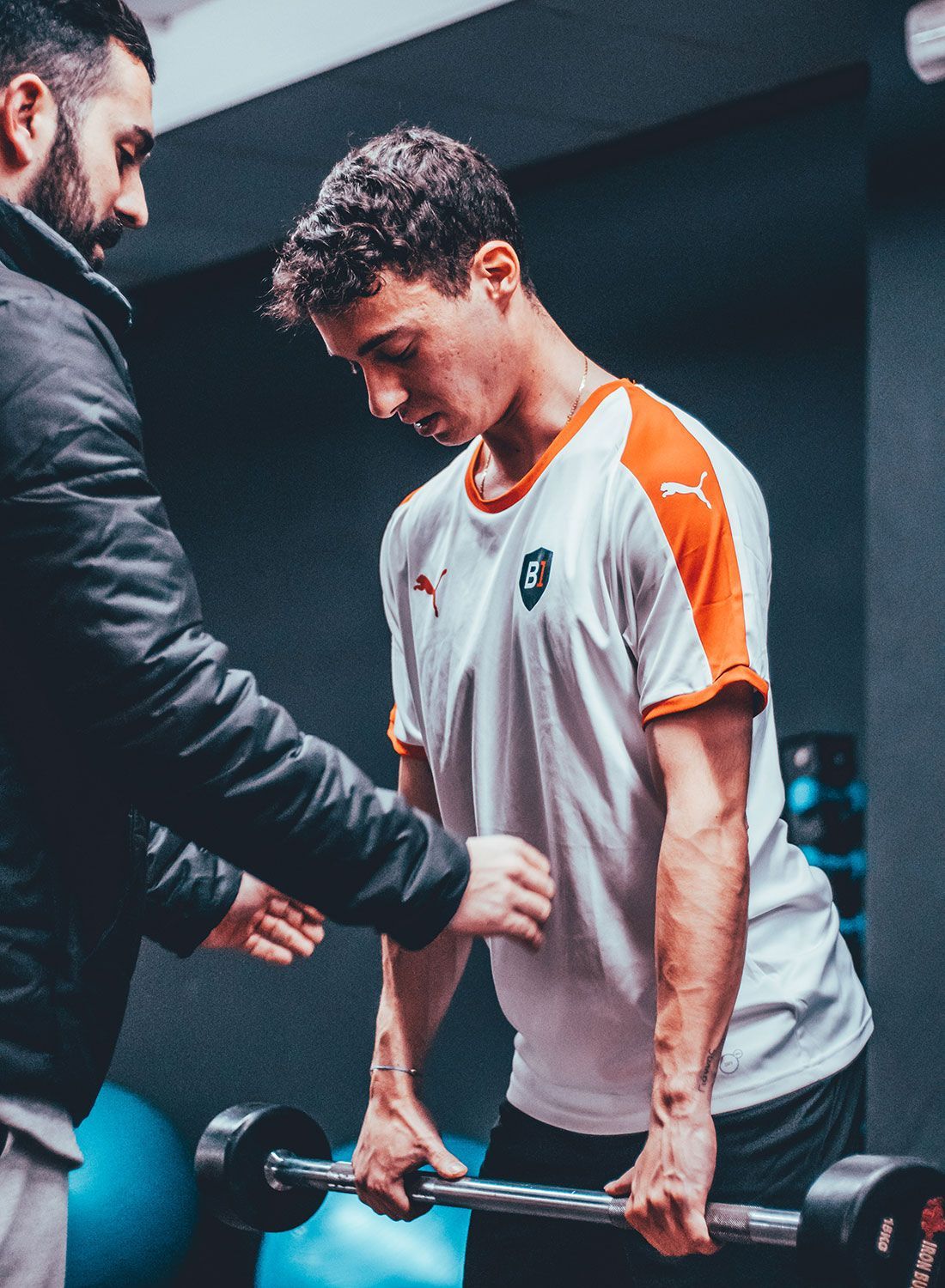Every week B1 Players are required to attend weight training sessions with our staff coaches. When most think of strength, they often correlate it to lifting massive amounts of weight and think of big muscles.
Weight training at B1 Soccer Academy is specific to the demands our players experience day to day on the soccer field. Each of these soccer-specific demands; sprinting (linear), change of direction, jumping, twisting, striking the ball, contact with the opposition, heading, demand force & velocity. To maximize each of these demands, strength is required.
Research has shown that proper strength training can help in force output, injury prevention, recovery, and maintaining a high level of fitness. Although weight training is of great value to the soccer player, it must be carefully monitored because of negative impacts on speed, agility, flexibility, and range of motion.
Working hand to hand with our Physio, Pepe Romero monthly reports are presented to our staff; body weight, fat %, and jump test. Knowing the precise data we can structure training appropriate to each player. Coaches keep an accurate record of progression in strength but ensure flexibility, the range of motion, not allowing players to become to muscle-bound. Through each activity, form, load, repetition is closely guided.
“Our main focus is to build a base of strength for our players, monitor progression but not overload them depending on the microcycle. Knowing the demands our players are put under at training we cannot over exceed knowing it will result in, fatigue, injuries, and a decline in performance. We work in a tight range between understanding, “proper timing/activation in overload vs. excessiveness.”
The lower body, of course, is of greatest importance. Most actions such as running, changing direction, jumping, striking the ball, tackling, trapping, are generated from the strength of the legs. Not only the major muscles but the stabilizer muscles (smaller, produce less power in actions) but are as important for stabilization.
Majority of the focus in the legs should be a 60% to 45% ratio of quadriceps to hamstring strength. Research shows, an unbalance can lead to knee injuries (ACL, MCL, LCL tears).
Furthermore, the abdominal region/lower back and upper body are essential in weight training. The abdominal muscles allow for a high release of power within each strike of the ball & lateral movements where twisting of the trunk (lower back) is required.
Lower back strength, working simultaneously with the abdominal region can also be used as a shield in contact made while battling for the ball, jumping, & twisting. Upper body strengths help with for heading, throw-ins, and legal shoulder to shoulder contact.
In all exercises, the muscles must operate through their full range of motion (isotonic/isokinetic) not to take away from players flexibility.
At B1 Soccer Academy we take care of all the details and work to offer the best solutions to our players. In addition to using all the resources to get the most out of each and every one of the B1 Players!

